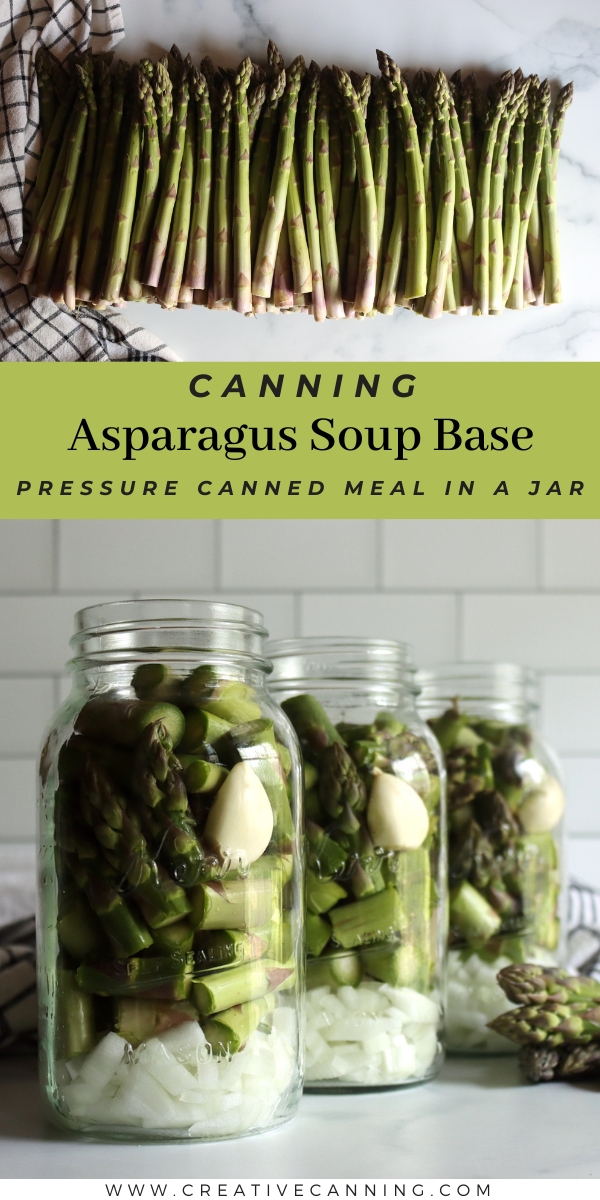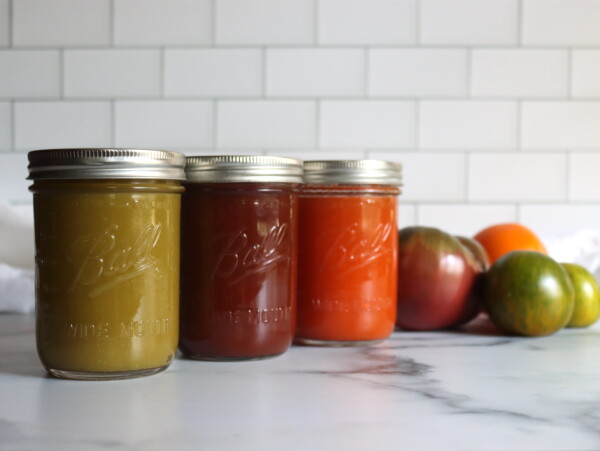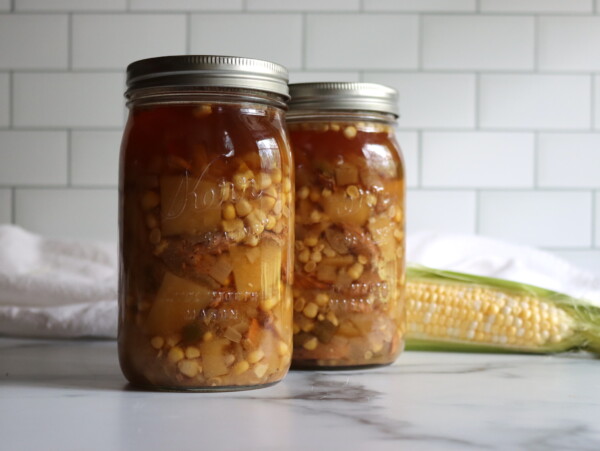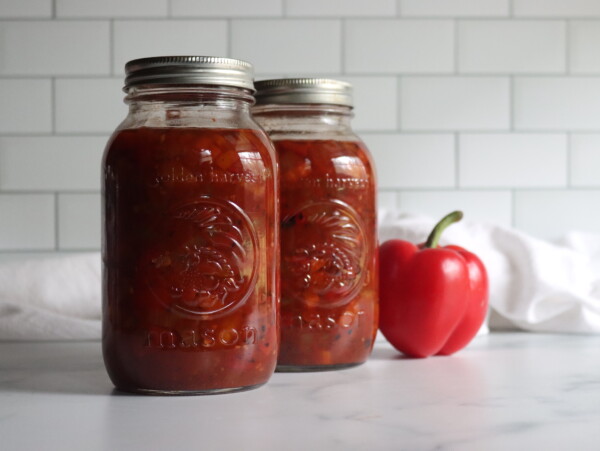This post may contain affiliate links. Please see our disclosure policy.
Canning asparagus soup is a delicious way to preserve asparagus for year-round use. It’s ready to go at a moments notice from your pantry shelf, just puree, heat, and serve.

Asparagus soup is absolutely delicious in season, but this prolific vegetable has a short season. One of my favorite ways to preserve asparagus is in this simple home canned soup base.
I call it a “soup base” because it’s designed to be pureed at serving. Smooth soups aren’t approved for canning, but you can can them chunky style and then puree them when you need them.
This canning recipe creates a base that you can easily transform into a luscious cream of asparagus soup whenever you’re in the mood. Just remember, we can’t add cream or puree the soup before canning for safety reasons.
With added cream at serving, this smooth soup is rich and nourishing, perfect for a cozy meal anytime.
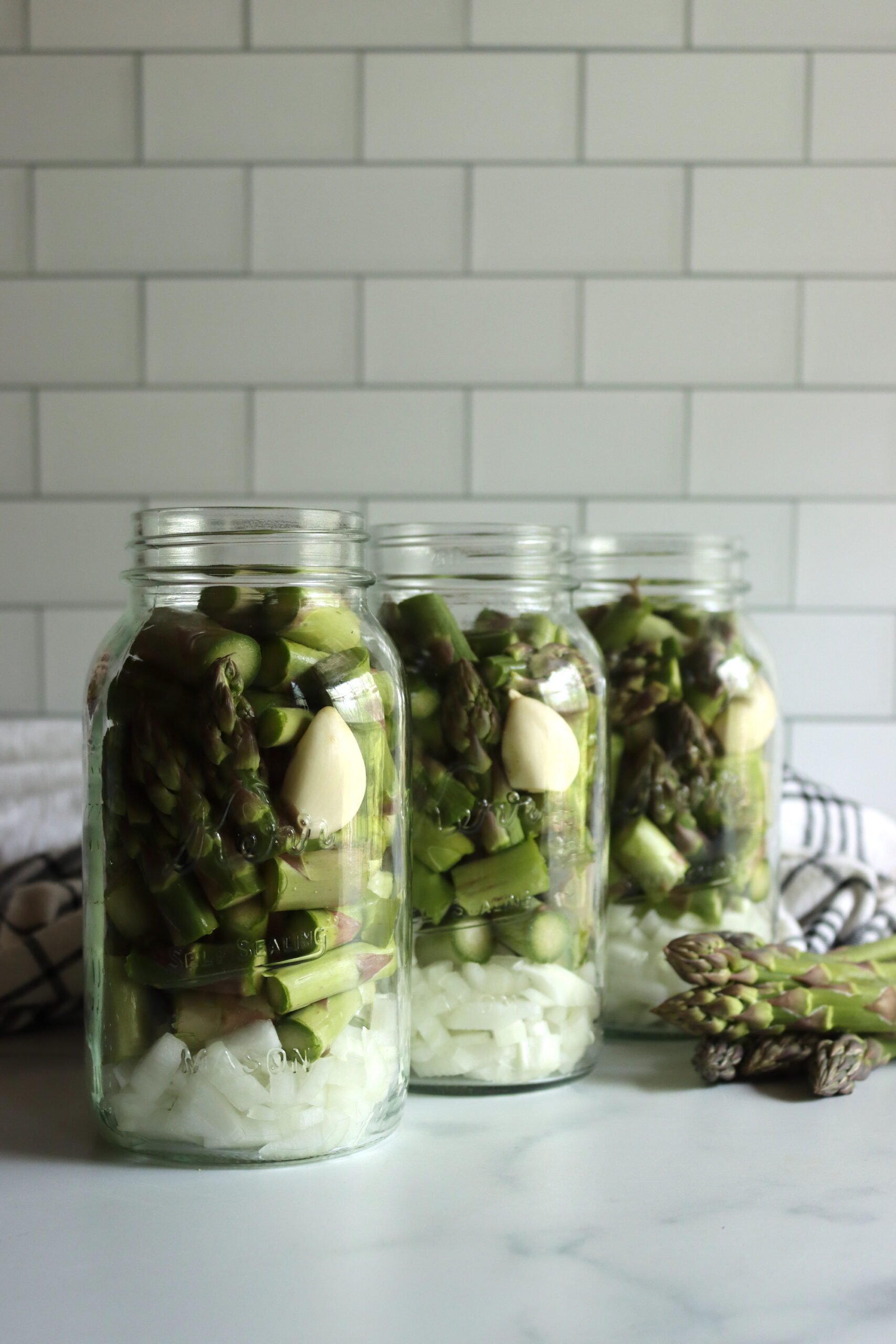
Keep in mind, I’ve shown the raw recipe ingredients in the jars to give you an idea of proportions, but you’ll need to hot pack this recipe. That means you can measure quantities in jars, as I’ve done, but you will need to pour everything out into a stock pot with stock and bring it to a boil before packing it into the jars.
This ensures that the jars are evenly mixed, and that there’s not a dense layer of anything. For canning safety, everything should be evenly distributed in the jars before they go into the canner.
Ingredients for Canning Asparagus Soup
This recipe follows the University of Alaska’s Hearty Soup Canning Guidelines (Publication FNH-00065). The minimum batch size for pressure canning is two quarts, but feel free to scale it up as needed.
For a small two-quart canner batch, you’ll need:
- 1 ½ cups chopped onion (about 200 g)
- 6 cups chopped asparagus (about 400 g)
- 2 garlic cloves, minced or whole (5 to 10 g)
- 2 tsp salt
- Vegetable stock to fill (about 4 cups)
Packing Each Quart Jar
Each quart jar should include:
- ¾ cup chopped onion (about 100 g)
- 1 ½ cups chopped asparagus (about 200 g)
- 1 garlic clove, minced or whole
- 1 tsp salt
- Vegetable stock to fill (about 1 ½ to 2 cups)
Feel free to adjust the quantities based on your preferences! The combination of flavors can be flexible, and I like to keep it vegetarian, but you can always add chicken stock if you prefer a heartier taste.
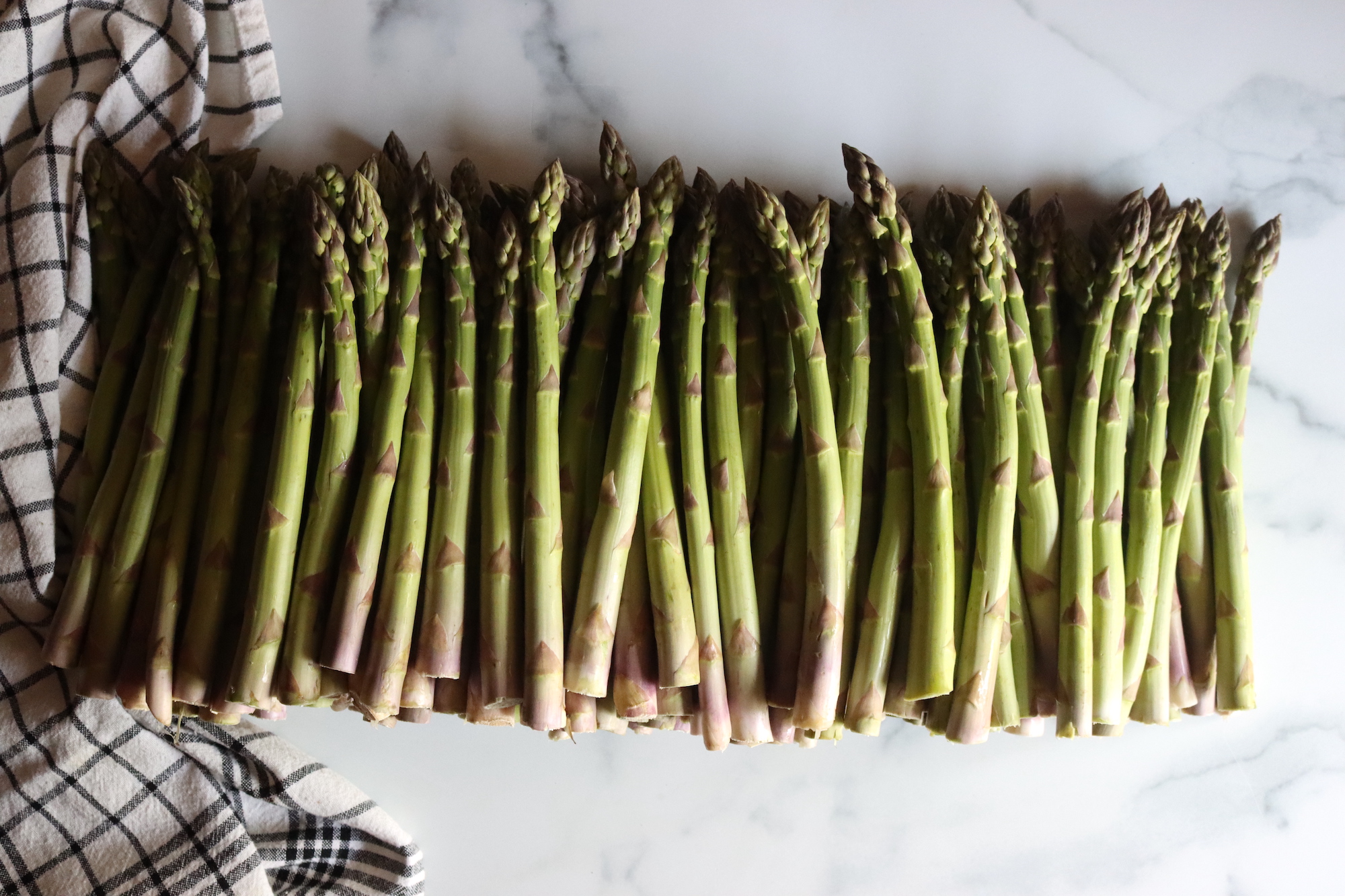
Canning Asparagus Soup
Before you dive in, get your pressure canner ready and prepare your jars. If you’re doing a hot pack, your canner should be simmering at around 180°F.
Start by peeling and chopping your onions. Next, trim and chop the asparagus into bite-sized pieces. If you’re using fresh garlic, mince it up as well.
In a large pot, combine the chopped onions, asparagus, minced garlic, and salt. Pour in enough vegetable stock to cover the vegetables, and bring the mixture to a boil.
Once it’s boiling, reduce the heat and let it simmer for about 5 minutes. This quick cook helps the vegetables soften just enough to maintain their texture during the canning process.
For a hot pack, ladle the hot soup base into the jars, leaving about 1 inch of headspace. Using a slotted spoon helps to add the solids first, followed by the broth to fill up to the headspace.
Once filled, use a bubble remover or a spatula to release any trapped air bubbles and adjust the headspace if necessary. Wipe the rims of the jars with a clean cloth, place the lids on, and screw on the metal bands until they are fingertip tight.
Now, place the filled jars in the pressure canner. Secure the canner lid and turn the heat to high. Allow steam to escape for about 10 minutes before adding the weight.
Process the jars at 10 pounds of pressure for 75 minutes for pints and 90 minutes for quarts. The pressure depends on altitude, see below.
After processing, turn off the heat and let the canner cool naturally. Once it’s safe to open, carefully remove the jars and place them on a cooling rack.
After 12-24 hours, check the seals. If the lids are concave and don’t pop when pressed, you’ve sealed them properly!
Store your well-canned jars on a pantry shelf where they’ll maintain peak quality for 12 to 18 months, but they’ll be good to eat as long as they’re sealed. Just remember to refrigerate after opening.
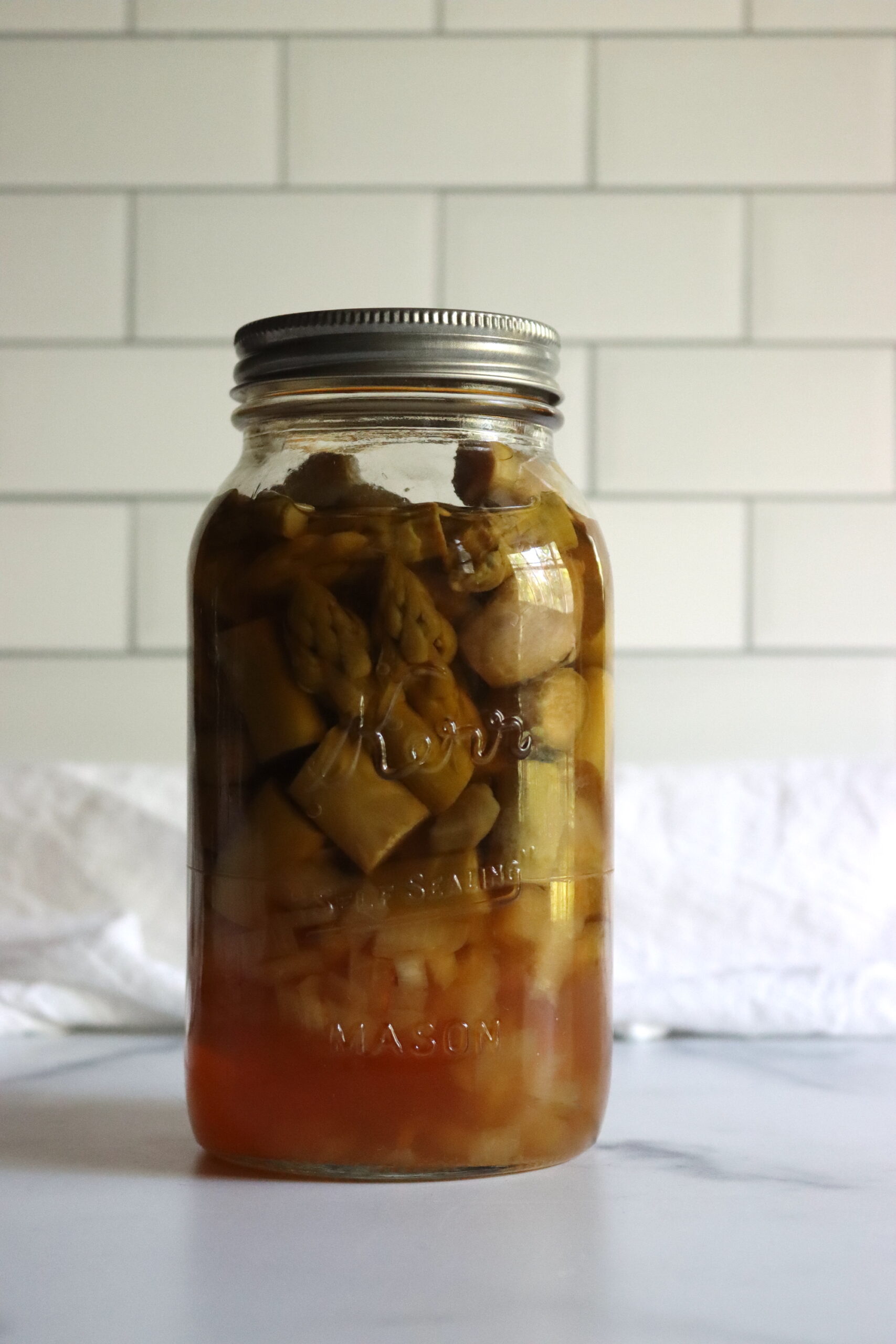
Altitude Adjustments
With pressure canning, the processing times stay the same at higher altitudes, but the pressures change. Here are the altitude adjustments for pressure canning soup:
For dial gauge pressure canners:
- 0 to 2,000 feet in elevation – 11 lbs pressure
- 2,001 to 4,000 feet in elevation – 12 lbs pressure
- 4,001 to 6,000 feet in elevation – 13 lbs pressure
- 6,001 to 8,000 feet in elevation – 14 lbs pressure
For weighted gauge pressure canners:
- 0 to 1,000 feet in elevation – 10 lbs pressure
- Above 1,000 feet – 15 lbs pressure
Serving Suggestions
When you’re ready to enjoy your creamy asparagus soup, simply heat it on the stove or in the microwave. It can be served as is, but it’s meant to be pureed at serving time.
For a rich, creamy finish, stir in some heavy cream or a dollop of crème fraîche right before serving. You can also garnish with fresh herbs or a sprinkle of parmesan for extra flavor.
This soup base is perfect for those chilly evenings when you want something comforting and delicious!
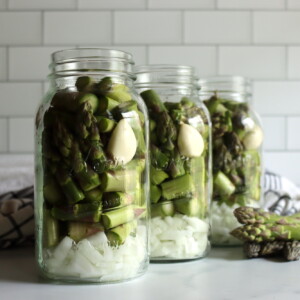
Canning Asparagus Soup Base
Equipment
Ingredients
In total, for a small two-quart canner batch, you’ll need:
- 1 ½ cup onion, chopped, about 200 g
- 6 cups asparagus, chopped, about 400 g
- 2 cloves garlic, minced or whole
- 2 tsp salt
- Vegetable stock to fill, about 4 cups
Instructions
- Prepare your pressure canner and jars. If hot packing, your canner should be at 180°F.
- Wash and chop the onions and asparagus, and mince the garlic.
- Combine onions, asparagus, garlic, and salt in a pot, then cover with vegetable stock and bring to a boil. Simmer for about 5 minutes.
- Ladle the soup base solids into jars, leaving 1-inch headspace, then top with broth, still maintaining 1 inch headspace.
- Remove air bubbles, wipe rims, seal jars, and process at 10 pounds pressure for 90 minutes for quarts or 75 minutes for pints, adjusting pressure for altitude.
- Cool, check seals, and store.
Notes
Quantities for Each Quart
This recipe follows the University of Alaska’s Hearty Soup Canning Guidelines (Publication FNH-00065). The minimum batch size for pressure canning is two quarts, but feel free to scale it up as needed. If you’re scaling up this recipe, here’s how much you’ll need for each additional quart jar:- ¾ cup chopped onion (about 100 g)
- 1 ½ cups chopped asparagus (about 200 g)
- 1 garlic clove, minced or whole
- 1 tsp salt
- Vegetable stock to fill (about 1 ½ to 2 cups)
Serving Suggestions
When you’re ready to enjoy your creamy asparagus soup, simply heat it on the stove or in the microwave. It can be served as is, but it’s meant to be pureed at serving time. For a rich, creamy finish, stir in some heavy cream or a dollop of crème fraîche right before serving. You can also garnish with fresh herbs or a sprinkle of parmesan for extra flavor.Altitude Adjustments
With pressure canning, the processing times stay the same at higher altitudes, but the pressures change. Here are the altitude adjustments for pressure canning soup:For dial gauge pressure canners:
- 0 to 2,000 feet in elevation – 11 lbs pressure
- 2,001 to 4,000 feet in elevation – 12 lbs pressure
- 4,001 to 6,000 feet in elevation – 13 lbs pressure
- 6,001 to 8,000 feet in elevation – 14 lbs pressure
For weighted gauge pressure canners:
- 0 to 1,000 feet in elevation – 10 lbs pressure
- Above 1,000 feet – 15 lbs pressure
Nutrition
Nutrition information is automatically calculated, so should only be used as an approximation.
Soup Canning Recipes
There are so many different soup canning recipes out there, try these for your pantry:
Vegetarian Canning Recipes
There’s more than one way to preserve plant-centered recipes in a jar! Try any of these vegetarian canning recipes:
